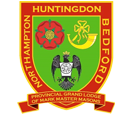Early use of mason's mark
A long history
The history of the Mark Degree within the UK unarguably dates back to at least the 1500’s. One of the earliest surviving minute book records of a Masonic Lodge, Lodge Edinburgh No 1 (Mary’s Chapel) dated 31 July 1599, were affirmed by it's Warden who placed his Mark to them.
Wardens were at that time the ‘Masters’ of Scottish Lodges. Lodge minutes of that same year noted the presence of a number of non-operative or speculative Masons, together with their Marks.
Historical evidence from those early days demonstrates that the awarding of a Mark to a member of a Masonic Lodge, within Scotland, was definitely being carried out.
The Masonic artefact known as the ‘Aberdeen Mark Book’ also shows that a Mason’s Mark was more than just symbolic; it had meaning and purpose. It was clearly of significance and held in high regard. A page from the book is shown here.
The book starts in 1670 and records the name and Mark of the members of Aberdeen Lodge No.1 ter. This Lodge is considered significant in the history of the development of speculative Freemasonry as the book also records the members' occupations - so it is known for certain that around 80% of the members were not operative stonemasons in 1670. It still meets today.
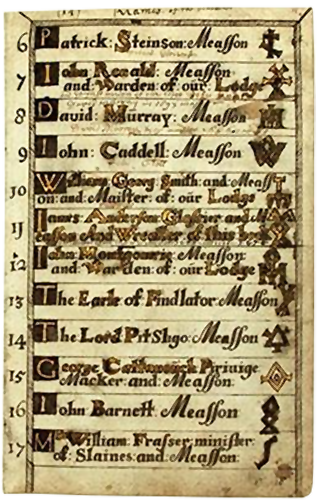
The Aberdeen Mark Book, 1670
On this page there are listed as members, with their Mark, a humble piriuige maker [porridge maker], a Lord, an Earl, a Minister of the Church of Scotland and, at No.11, a Glazier.
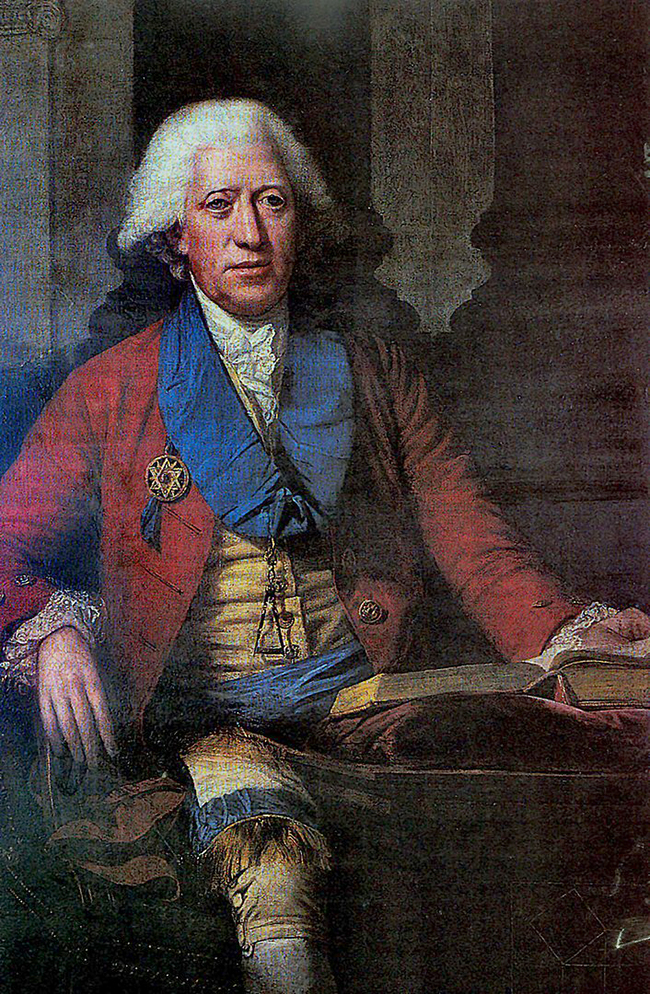
Thomas Dunckerlay
the earliest records
Recognised workings in 1769
The earliest clear records of a speculative Mark Degree being worked in England are those of Royal Arch Chapter No 257 in Portsmouth, dated 1 September 1769, when several brethren were made Mark Masons and Mark Masters. The ceremony was performed by Thomas Dunckerlay, as Provincial Grand Superintendent.
The Mark Degree remained intimately linked with the Craft from the earliest days in England until the Preliminary Declaration was agreed upon in the Act of Union of 1813 between the two divided Grand Lodges of England; the Ancients and the Moderns.
Notwithstanding this Preliminary Declaration, the Mark Degree remained very popular. So much so that in 1856 the Craft Grand Lodge put forward a resolution to include the Mark Degree as an integral part of Craft Freemasonry, just as it still is in Scotland today. However, just three months later, at the next meeting of The United Grand Lodge of England, the proposition had been withdrawn.
Further research points to the fact that it may well have been the Mark Masons themselves who withdrew, rather than the other way round, presumably being reluctant to lose their independence. Whatever the reasons, just nineteen days later the Grand Lodge of Mark Master Masons was formed.
Provincial origins
In Northampton since 1879
In 1857 the Grand Master of the Mark Degree, Lord Leigh, announced that he wished any county with at least three Lodges to form themselves into a Province, with a Provincial Grand Master who would be welcomed by the Brethren he had to superintend – a principle that, happily, still applies today.
Mark Masonry started within the Mark Province of Northampton, Huntingdon and Bedford in 1879 - with the Consecration of Simon de St Liz Lodge of Mark Master Masons No. 245.
Being the only Mark Lodge in Northamptonshire at that time, it was taken under the auspices of the Mark Province of Leicestershire, Northamptonshire, Derbyshire & Rutlandshire.
In 1894 a new Province was formed, that of Northampton, Huntingdon and Bedford, which continued until 1985 when two separate Provinces were formed - Northamptonshire & Huntingdonshire and Bedfordshire.
On 6th November 2021 both Provinces were dissolved and the Province of Northampton, Huntingdon and Bedford was constituted. The Province now has 23 Mark Lodges and 18 Royal Ark Mariner Lodges.
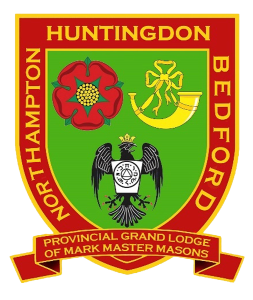
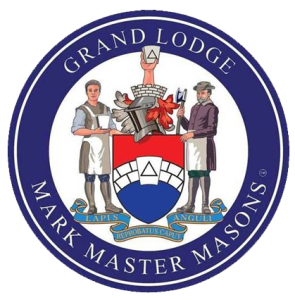
today
Grand Lodge
The governing body of the Mark Degree is The Grand Lodge of Mark Master Masons of England and Wales and its Districts and Lodges Overseas. It is based at Mark Masons Hall in London.
The present Grand Master is His Royal Highness Prince Michael of Kent. He is the brother of the Duke of Kent, who is the current Grand Master of the United Grand Lodge of England - which governs Craft Freemasonry.
